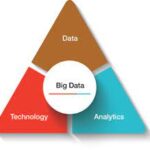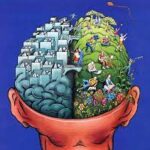Introduction:
In the era of technological wonder, machine learning has emerged as a captivating force, fueling everything from virtual assistants to market predictions. This blog takes you on an illuminating journey, unveiling the nuances, applications, and transformative potential of this remarkable field.
- Decoding Machine Learning
Machine learning, a subset of artificial intelligence, empowers computers to learn and adapt from experience without explicit programming. It’s akin to teaching a machine to think. Central to this is algorithm-driven pattern recognition in data, allowing computers to predict, decide, and recommend with human-like insight.
- Exploring Machine Learning Types
Machine learning unfolds in three primary forms: supervised, unsupervised, and reinforcement learning. Supervised learning involves training models with labeled data for future predictions. Unsupervised learning reveals patterns in unlabeled data, often yielding insights or categorizations. Reinforcement learning emulates trial-and-error learning, refining actions based on feedback from the environment.
- Reshaping Industries through Applications
Machine learning extends beyond academia, sparking transformative changes in various sectors. In healthcare, it aids diagnoses, patient outcome predictions, and drug discoveries. Finance harnesses algorithms for market analysis, risk assessment, and trading optimization. Its impact spans retail, manufacturing, transportation, and entertainment, revolutionizing decision-making and problem-solving.
- Conversational AI and Natural Language Processing
Natural Language Processing (NLP), a subset of machine learning, empowers computers to comprehend, interpret, and generate human language. NLP birthed chatbots, virtual assistants, and language translators, enhancing human-machine interactions. This technology bridges communication gaps, fostering seamless and intuitive connections.
- Ethics and Bias: Machine Learning’s Moral Compass
As machine learning integrates into society, ethical concerns surface. Algorithmic biases perpetuate inequalities and discrimination. The responsibility lies not just in technological advancement, but in fostering fair, unbiased, and transparent algorithms. The future of machine learning hinges on striking a balance between innovation and ethics.
Conclusion:
Machine learning isn’t just an innovation; it’s a paradigm shift that redefines human potential. This realm of intelligent algorithms transforms data into foresight, guided by patterns machines decipher. Applications span healthcare, finance, language translation, and more. As we celebrate these achievements, ethical considerations demand attention. The journey through machine learning is one of limitless exploration, where data forms brushstrokes and algorithms weave canvases of intelligence and innovation.




